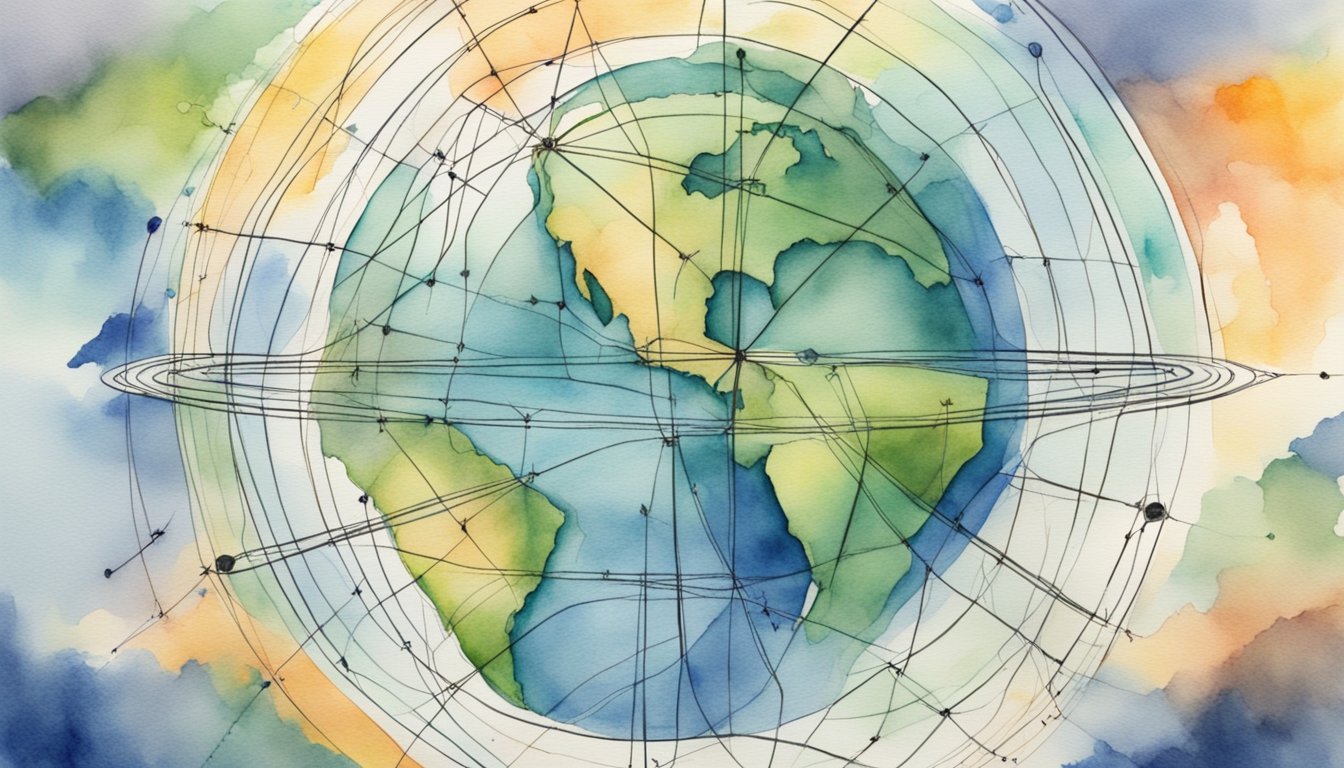Understanding Planetary Boundaries
The concept of planetary boundaries frames the limits within Earth’s system that humanity should not cross to avoid detrimental environmental change. This section explores the framework’s background, structure, and critical elements.
Conceptual Framework
The conceptual framework behind planetary boundaries was first introduced by a group of scientists including Johan Rockström and Will Steffen. It proposes quantifiable boundaries designed to provide a safe operating space for humanity. These boundaries mark thresholds in Earth system processes that, when crossed, could lead to abrupt or irreversible environmental changes.
Historical Development
Planetary boundaries were brought into focus in 2009 through research that Steffen, Rockström, and a group of experts contributed to. Since then, the framework has evolved with Science Advances and other publications extending the analysis of the concept. This historical development underscores a growing recognition of humanity’s impact on the Earth system and the need to understand and respect these limits.
Key Components
Nine key components constitute the planetary boundaries: climate change, biosphere integrity, which includes genetic diversity and functional diversity, land-system change, freshwater use, biogeochemical flows (specifically nitrogen and phosphorus cycles), ocean acidification, atmospheric aerosol loading, stratospheric ozone depletion, and introduction of novel entities. Researchers such as Richardson and Bendtsen have contributed to understanding the boundaries by analyzing the various ways in which they can be quantified, while Steffen and colleagues have updated the framework to reflect new insights into Earth system resilience.
These components are interconnected, indicating the complexity of stewardship required to maintain the Holocene-like conditions that have allowed human civilization to flourish. The framework has been critical in fostering an understanding of the links between human activities, global sustainability, and Earth’s resilience, particularly as it emphasizes the importance of maintaining the stability of the entire biosphere.
Implications and Actions

Understanding planetary boundaries is essential for maintaining Earth’s stability and fostering sustainable human development. The framework of planetary boundaries highlights the pressing environmental challenges and the urgent need for actions that align with sustainable practices to ensure a viable future.
Global Challenges
Planetary boundaries bring attention to critical thresholds in Earth’s systems that, when crossed, can lead to irreversible environmental changes. Climate change, exemplified by escalating greenhouse gas emissions, is exerting pressure on the Holocene conditions that have enabled human societies to thrive. Issues such as ocean acidification and atmospheric aerosol loading also pose serious risks to the health of our planet’s ecosystems.
The loss of biodiversity is another alarming concern, with species extinction rates soaring, thus disrupting ecological balance and weakening the resilience of many systems. This, coupled with nitrogen and phosphorus cycles being significantly altered by human activity, threatens food security and water quality worldwide.
Sustainable Practices
To tackle global environmental issues, sustainable practices must be widely implemented. This involves managing freshwater use efficiently, reducing pollution and promoting green growth. Adopting measures that minimize land-use change and decrease our environmental footprint are steps forward in this direction.
The principles of doughnut economics offer a blueprint for development that respects environmental boundaries while ensuring that basic human needs are met. This balanced approach emphasizes the necessity of transformation in sectors like energy, advocating for a shift towards renewable sources and away from fossil fuels to curtail carbon emissions and combat global warming.
Future Pathways
Looking ahead, it is essential that policies reflect an integrated view of ecology and society to address environmental challenges. Progressive policy-making can help steer societies toward trajectories that respect planetary boundaries and foster stability. For instance, mitigating climate change can involve limiting carbon emissions to levels that keep global warming well below two degrees Celsius, as recommended by many climate scientists.
Scientific publications have played a pivotal role in shaping the understanding of planetary boundaries, and continuous research is critical to refine these concepts. By aligning practice with the latest scientific insights and fostering equitable resource distribution, humanity can strive for a future that is both sustainable and just for all.

